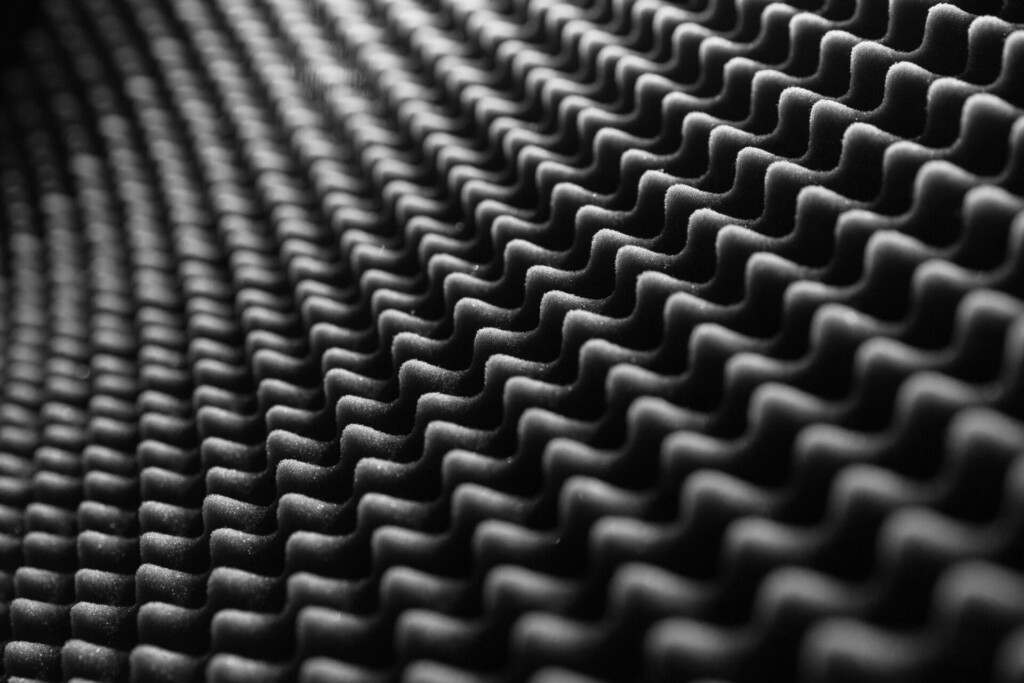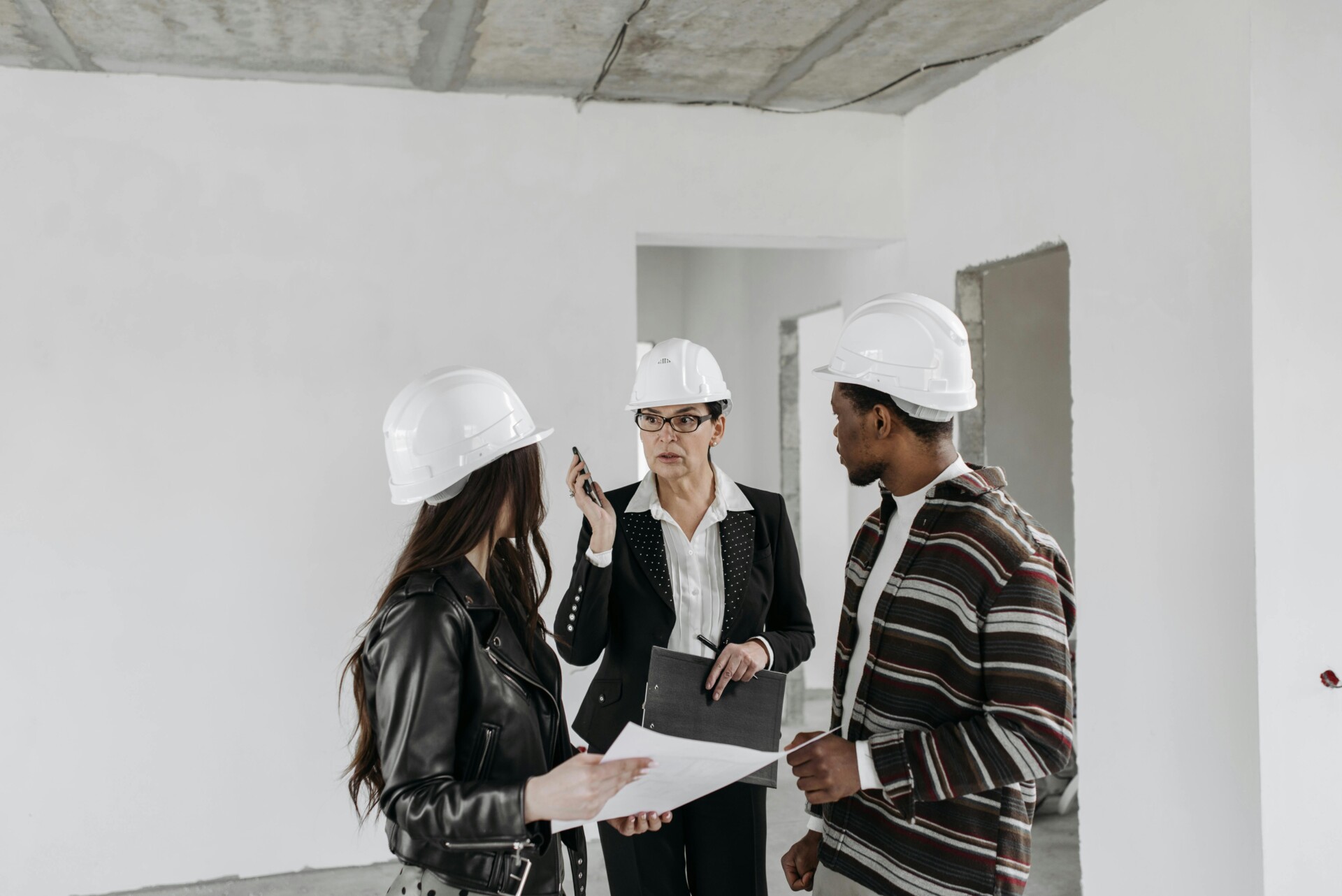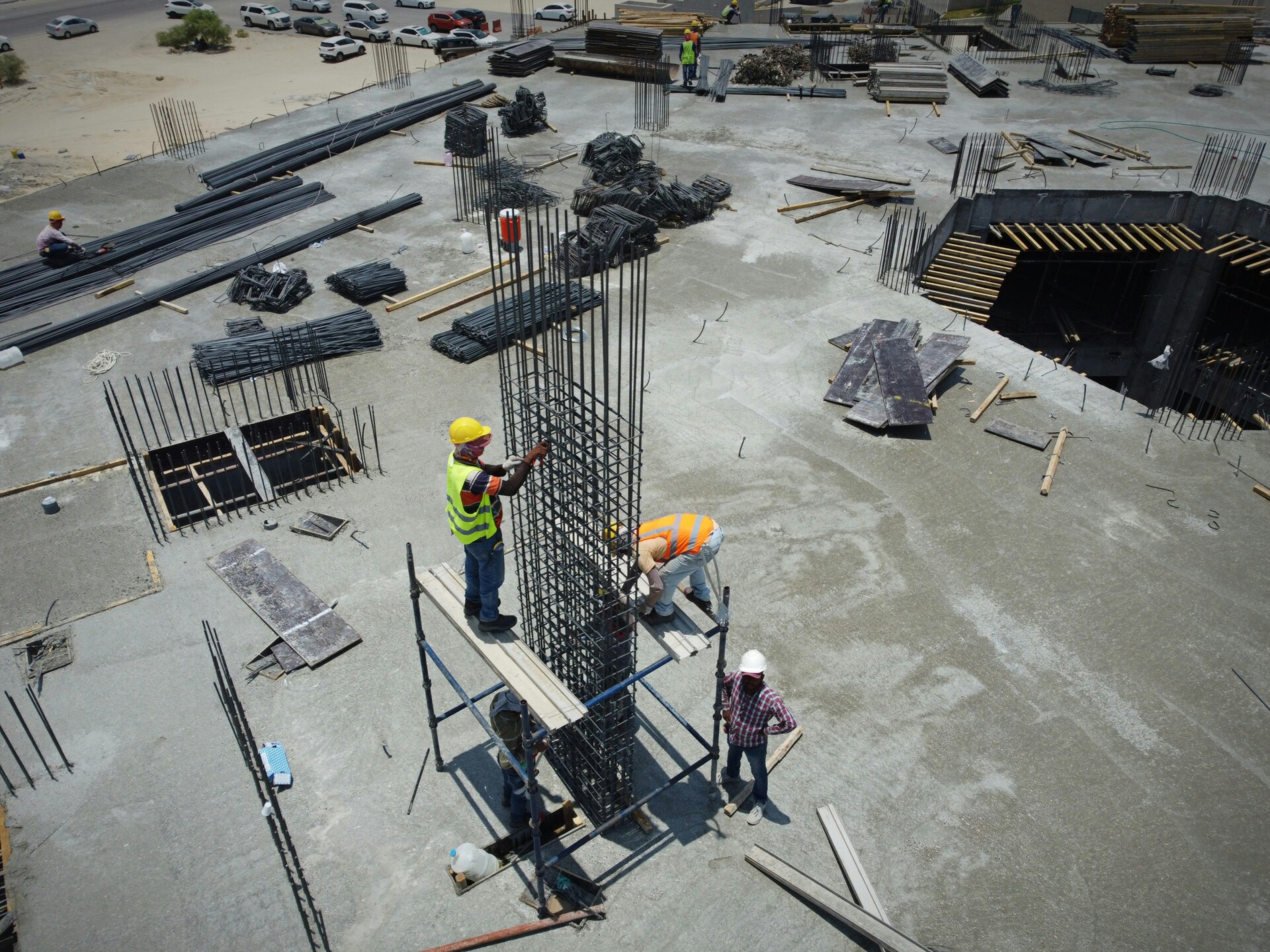Austin’s rapid business growth has transformed office towers, shared workspaces, and open-plan offices into bustling hubs of activity. Yet this energy comes with a hidden cost: constant noise that undermines productivity and professional communication. Conversations echo across conference rooms, HVAC systems create persistent background hum, and speech privacy becomes nearly impossible in modern office layouts.
Effective soundproofing solutions for commercial offices Austin address these challenges through strategic noise control that protects teams from distractions while maintaining the collaborative atmosphere that drives business success. We design acoustic improvements that support focus, enhance speech privacy, and create comfortable work environments where teams can perform at their best.
What Kinds Of Office Noise Should Austin Project Teams Address First?

We start every soundproofing project by identifying the specific noise type and its transmission path. This diagnostic approach prevents wasted effort on the wrong solutions and ensures we target the frequencies that matter most for each space.
Airborne Noise Sources
Airborne noise travels through air and passes through walls, doors, and glazing systems. In Austin offices, conversations from adjacent rooms create the most common privacy concerns. Traffic noise from nearby streets can penetrate through windows, especially in buildings along major corridors like South Lamar or East Cesar Chavez.
Office equipment generates consistent airborne noise that compounds throughout the day. Printers, phones, and computer fans contribute to overall sound levels. We measure these sources during peak operation hours to understand their cumulative impact on speech intelligibility.
Impact Noise And Structural Vibration
Impact noise occurs when footsteps, dropped objects, or moving furniture create vibration that transfers through floors and framing systems. This structure-borne energy can travel surprising distances through a building’s framework. Hard-soled shoes on concrete or tile floors generate particularly disruptive impact noise in open office environments.
Vibration from building systems also falls into this category. Elevator machinery, plumbing, and structural settling can transmit low-frequency energy through walls and floors, creating rumbles that interfere with concentration.
Room Echo And Reverberation
Hard surfaces in modern office design create reverberation and flutter that reduce speech clarity and increase perceived noise levels. Glass walls, polished concrete floors, and metal ceiling systems reflect sound waves back into spaces rather than absorbing them. This creates a buildup of ambient noise that makes conversations harder to follow and forces people to speak louder.
Austin’s industrial-chic office aesthetic often emphasizes exposed materials that worsen reverberation problems. We see this frequently in converted warehouse spaces and new construction that prioritizes visual impact over acoustic performance.
Building Systems And HVAC Duct Noise
HVAC systems introduce multiple noise pathways into office environments. Ductwork carries both equipment noise and airflow turbulence throughout buildings. Fan turbulence and blade passage noise enter duct systems, while high-velocity airflow through improperly sized transitions creates additional sound generation.
Rooftop units present particular challenges in Austin’s commercial market. Units running continuously during summer months can exceed Austin’s current 70-decibel limit for mechanical equipment, especially when placed without proper screening or isolation.
Sound Testing And Assessment
We conduct basic sound surveys and frequency analysis to map problem sources before designing solutions. Sound level meters help us identify whether issues stem from airborne transmission, structural vibration, or system-generated noise. This testing reveals which octave bands contain the most problematic energy, guiding our material selection and installation priorities.
Noise pathways often surprise building owners. Sound can travel through ceiling plenums, under raised floors, or through shared mechanical systems. We trace these paths systematically to avoid missing secondary transmission routes that could compromise the overall acoustic performance.
Which Materials And Systems Work Best In Austin Commercial Offices?
Effective soundproofing requires matching the right materials to specific acoustic problems. We approach each project by identifying the dominant noise sources, then selecting products that address those issues directly.
Mass And Barriers For Sound Blocking
Adding mass stops airborne sound transmission through building assemblies. Mass-loaded vinyl (MLV) provides dense, flexible material that increases wall mass without adding significant thickness to framing assemblies.
Soundproof drywall systems like QuietRock achieve higher STC ratings than standard gypsum board. These engineered panels use constrained-layer damping technology that converts sound energy into minimal amounts of heat, reducing transmission through walls and ceilings.
Decoupling Systems For Vibration Control
Resilient channels create mechanical separation between drywall and framing members. This decoupling reduces structure-borne vibration transfer that can carry sound around traditional mass-based barriers.
Isolated framing assemblies use separate stud walls or floating floor systems to eliminate direct contact between surfaces. We specify these approaches when standard resilient mounting cannot achieve target STC performance.
Viscoelastic Damping Compounds
Damping compounds like Green Glue apply between drywall layers to reduce sound vibration within wall assemblies. These viscoelastic materials convert acoustic energy into small amounts of heat, improving STC performance by 5-10 points over standard construction.
Proper application requires full coverage between panels with consistent thickness. We monitor installation to ensure compounds maintain their damping properties throughout the curing process.
Sound Absorption Materials
Mineral wool and rock wool insulation provide both thermal and acoustic benefits within wall and ceiling cavities. These materials achieve high NRC ratings while maintaining fire resistance properties required by building codes.
Fiberglass batts offer cost-effective absorption for less demanding applications. Acoustic panels, foam treatments, ceiling baffles, and specialized tiles address reverberation in finished spaces where traditional insulation is not visible.
Sealing And Weatherproofing
Acoustic sealants remain flexible after curing to accommodate building movement while preventing sound leakage through gaps and penetrations. These materials must bond to multiple substrates and maintain their seal over time.
Door gaskets and automatic door bottoms create perimeter seals that dramatically improve door assembly STC ratings. We specify adjustable systems that maintain contact despite normal door operation and building settlement.
Floor Impact Noise Control
Rubber underlayment reduces footfall noise transmission through floor assemblies. Cork underlayment provides similar IIC improvement while offering additional thermal insulation benefits.
Floating floor systems with appropriate underlayment can achieve IIC ratings above 60, meeting most commercial requirements for impact noise isolation between floors.
Sound Masking Technology
Sound masking systems generate controlled ambient sound that makes conversations less intelligible at nearby workstations. These systems prove particularly effective in open office environments where speech privacy cannot rely solely on barriers and absorption.
Modern masking systems allow zone control and automatic adjustment based on ambient noise levels. We coordinate speaker placement with ceiling systems and HVAC layouts for optimal coverage and minimal visual impact.
Door And Window Treatments
Solid-core doors significantly outperform hollow-core units for sound blocking. When combined with proper sealing, these assemblies can achieve STC ratings appropriate for most office privacy requirements.
Window inserts add mass and create air gaps that improve glazing STC performance without replacing existing windows. This approach works well for tenant improvement projects where exterior modifications are limited.
How Should Solutions Be Installed Across Walls, Ceilings, Floors, and Shared Spaces?

Installation technique varies by surface type and intended room function. Each structural element requires specific approaches that address different sound transmission paths while maintaining the aesthetic and operational needs of commercial spaces.
Wall Treatment Installation
Wall installations focus on mass addition, vibration decoupling, and air leak sealing. We install mass-loaded vinyl directly against existing walls, followed by resilient channels that break structural connections between layers. This decoupling prevents sound vibration from transferring through framing members.
Layered drywall with viscoelastic damping compounds creates additional mass barriers. The damping material converts sound energy to heat between drywall sheets. We seal all penetrations around outlets, switches, and fixtures with acoustic sealants to prevent flanking paths.
For critical privacy needs, we construct room-within-a-room assemblies. These isolated structures use separate framing that doesn’t touch the host building’s structure, providing maximum sound isolation for executive offices or sensitive meeting spaces.
Ceiling and Floor Applications
Acoustic ceiling tiles replace standard tiles in suspended ceiling systems to improve absorption performance. We select tiles with high NRC ratings that target speech frequencies while maintaining visual appeal. Joist isolators install between floor joists and finish flooring to reduce impact transmission.
Underlayment systems go beneath carpet, luxury vinyl, or other finish floors. Rubber and cork materials excel at reducing footfall noise that transmits to spaces below. These systems improve IIC ratings without affecting floor height significantly.
Suspended ceiling clouds and baffles mount above workstations in open areas. We position these elements to intercept reflected sound waves before they build up across large spaces. The placement follows acoustic modeling that identifies primary reflection zones.
Door and Window Upgrades
Solid-core doors replace hollow-core units to add mass and reduce transmission. We install perimeter gaskets around door frames and automatic door bottoms that seal gaps when doors close. These sealing systems eliminate air leaks that compromise sound isolation.
Window inserts add a secondary glazing layer with an air gap for improved sound blocking. Heavy acoustic curtains provide additional absorption and some transmission loss when privacy needs fluctuate throughout the day. We coordinate these treatments with lighting and HVAC requirements.
HVAC System Treatments
Duct liners install inside supply and return ducts to absorb equipment noise before it reaches occupied spaces. Silencers mount at equipment connections to reduce fan and motor noise transmission. We wrap exterior ductwork with mass-loaded vinyl barriers where ducts pass through sound-sensitive areas.
Vibration isolation pads mount under HVAC equipment to prevent structure-borne noise transmission. These installations require coordination with mechanical systems to maintain proper drainage and airflow while achieving acoustic goals.
Open Area Zoning
Wall-mounted panels install at strategic locations to absorb direct and reflected sound in open workspaces. We position panels in the speech range where conversations occur most frequently. Ceiling baffles suspend at varying heights to break up long sight lines and sound paths.
Acoustic partitions create semi-private zones without full-height walls. These systems combine sound absorption with visual screening to support focused work areas. Sound masking systems integrate speakers that provide controlled background noise to improve speech privacy zones.
Aesthetic Integration
Fabric-wrapped panels coordinate with interior color schemes and branding requirements. We offer custom printing for corporate graphics while maintaining acoustic performance. Color-matched panels blend with architectural walls and ceilings to create seamless installations.
Microperforated panels mimic wood, metal, or stone finishes while providing sound absorption. These systems satisfy high-end design requirements in executive areas and client-facing spaces. Panel mounting systems accommodate various wall types and structural limitations.
We align each installation approach with specific room functions. Conference rooms receive treatments optimized for speech clarity and privacy. Open work areas focus on reverberation control and background noise management. Break areas balance acoustic comfort with easy maintenance requirements.
What Codes, Ratings, Mistakes, And Maintenance Should Teams Plan For?
Commercial office soundproofing requires more than selecting materials—it demands understanding acoustic ratings, building codes, and long-term care. We coordinate these elements to ensure projects meet regulatory standards while delivering consistent performance.
Understanding Acoustic Ratings
Sound Transmission Class (STC) measures how well walls block airborne sound transmission between spaces. Multi-family construction typically requires STC 50 minimum, though office environments benefit from higher ratings of 55-60 for better speech privacy.
Noise Reduction Coefficient (NRC) indicates how much sound a material absorbs rather than reflects. Acoustic panels, ceiling tiles, and carpet typically range from NRC 0.60 to 0.90, with higher values reducing echo and improving speech clarity in open offices.
Impact Insulation Class (IIC) addresses footfall and impact noise transmission through floor assemblies. While primarily relevant for multi-level construction, offices with concrete floors or raised access flooring systems should target IIC 50 or higher to minimize disturbance between levels.
Building Codes And Guidelines
OSHA establishes 85 dB as the permissible exposure limit for 8-hour workdays in industrial settings. Office environments should maintain lower ambient levels—typically 45-50 dB—to support concentration and communication.
ADA compliance emphasizes clear, intelligible sound for accessibility. Background noise levels should allow speech to be understood without strain, particularly in meeting rooms and public areas where assistive listening devices may be used.
NFPA fire safety requirements affect material selection significantly. All acoustic treatments must meet flame spread and smoke development ratings appropriate for their location and building occupancy classification.
Common Installation Mistakes
Misidentifying noise types leads to ineffective solutions. Treating airborne noise with absorption materials when sound blocking is needed wastes resources and fails to solve the problem.
Poor installation creates gaps and misaligned layers that compromise performance. Even small openings around outlets or unsealed penetrations can reduce wall STC ratings by 5-10 points.
Ignoring structural transmission paths allows sound to bypass acoustic treatments. Vibration through framing, continuous surfaces, and mechanical connections often defeats well-designed isolation systems.
Overlooking aesthetics results in treatments that don’t integrate with interior design, leading to removal or modification that reduces acoustic performance.
Maintenance Requirements
Absorptive materials require regular cleaning to maintain effectiveness. Fabric-wrapped panels collect dust and require vacuuming, while ceiling tiles may need replacement if they become stained or damaged.
Acoustic sealants and gaskets deteriorate over time. We schedule inspections to check door seals, window perimeters, and penetration sealing to prevent air leaks that compromise sound isolation.
Sound masking systems need calibration adjustments as office layouts change. Volume levels and frequency content should be tuned to match current space usage and occupancy patterns.
We document target ratings, installation details, and maintenance schedules for each project. This approach ensures acoustic performance remains consistent as buildings age and undergo renovations.
Conclusion And Next Steps For Austin Office Projects

Successful office soundproofing in Austin requires a systematic approach that balances multiple acoustic principles. We start with a focused assessment to map noise sources and transmission paths, then apply the right combination of mass, decoupling, absorption, and sealing techniques where they deliver the most impact.
Material selection must align with target performance ratings and specific room functions. STC ratings guide sound blocking between spaces, while NRC coefficients control reverberation within rooms. IIC values become critical for multi-story buildings where footfall noise travels through floor assemblies. We address HVAC system noise through proper duct treatment and equipment placement, while sound masking systems enhance speech privacy in open work environments. Long-term maintenance documentation ensures these acoustic solutions maintain their effectiveness over time.
Our team at EB3 Construction provides comprehensive support for Austin office acoustic projects through site surveys, sound testing, and phased installation plans tailored to your specific workspace needs.




